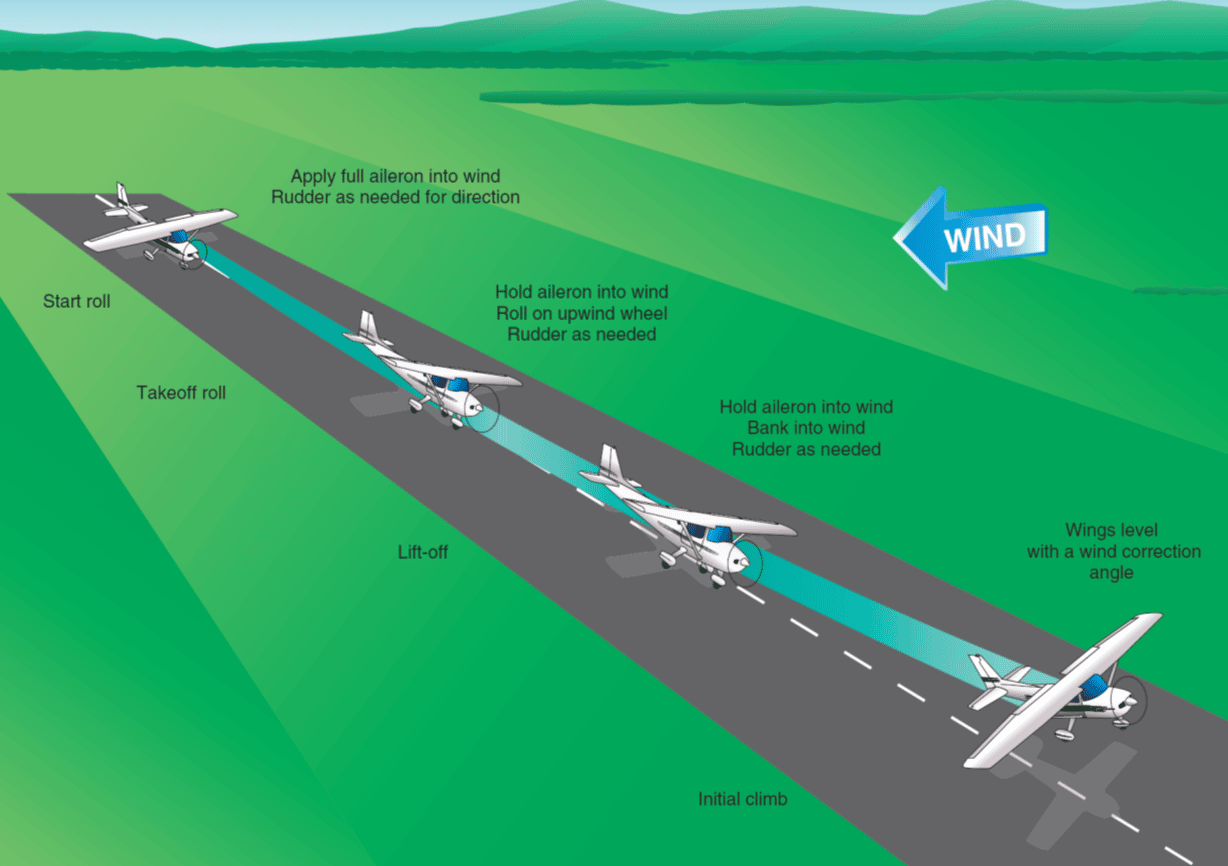X-Wind Takeoff

Early aviation lacked sophisticated wind analysis tools, leading to a greater reliance on pilot experience and observation of wind conditions. As aviation advanced, so did the understanding of wind dynamics and the development of techniques to mitigate the effects of crosswinds during takeoff and landing.
Early Days & Pilot Experience
Reliance on Observation: Early pilots relied heavily on visual cues and wind direction indicators to assess wind conditions.
Crabbing: Crabbing, a technique where the aircraft points its nose into the wind, was a common approach to counteract drift.
Basic Control Inputs: Pilots learned to use rudder and ailerons to maintain the runway centerline during takeoff and landing.
Technological Advancements & Refined Understanding
Wind Analysis Tools: The development of tools like xWind, which analyze wind direction and speed relative to the runway, has significantly enhanced wind management.
Sophisticated Takeoff Techniques: Pilots now employ more precise methods, including using ailerons to hold the aircraft into the wind during the takeoff roll, and differential braking or thrust to correct for drift.
Manufacturer Guidance: Aircraft manufacturers provide detailed guidance on crosswind takeoff procedures, ensuring pilots are aware of their aircraft's capabilities and limitations.
Ongoing Research & Safety
Accident Investigation: Aviation safety agencies continue to investigate accidents involving crosswind conditions, learning from incidents to improve flight procedures and safety.
Training and Education: Pilot training programs incorporate extensive instruction on crosswind takeoffs and landings, equipping pilots with the skills to handle challenging wind conditions.
Continued Innovation: Researchers and developers are exploring new technologies and techniques to further enhance crosswind takeoff and landing safety, including advanced flight control systems and wind-related flight simulators.
In essence, the history of crosswind takeoffs reflects a progression from reliance on pilot experience and observation to a more data-driven and technically sophisticated approach to managing wind conditions during flight operations.
